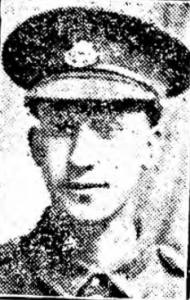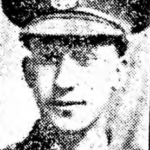
BORN HULL 24/12/1894. ELDEST SON OF ADA CECILIA WILSON (1872-1928) & SAMUEL WILLIAM HARWOOD (1869-1917), OF 7, AIRLIE STREET, HULL (WAR PENSION ADDRESS). AN APPRENTICE DRAUGHTSMAN AND STUDENT. HE WAS EMPLOYED BY MESSRS AMOS & SMITH, ENGINEERS.
HE ENLISTED IN THE “HULL COMMERCIALS”. TRANSFERRED FROM THE 10TH TO THE 8TH EAST YORKSHIRE BATTALION. ARRIVED IN FRANCE ON 16/11/1915. KILLED IN ACTION, AT THE SOMME, ON 19/07/1916, AGED 21. BURIED AT LONGUEVAL BRITISH CEMETERY, PICADIE, FRANCE. HIS DEATH WAS REPORTED IN THE HULL DAILY MAIL, ON 25/08/1916. *
Somme – The 8th East Yorkshires spent the following weeks alternating between resting, training, and spells in the line near Dickebusch, while preparations went on further south for that summer’s ‘Big Push’ (the Battle of the Somme). The battalion entrained for the Somme on the day the offensive began, 1 July. It went into brigade reserve when 3rd Division took over the Caterpillar Wood sector near Montauban, providing carrying parties and night patrols. After the disasters of the first day, 3rd Division in conjunction with three others was to make a daring night assembly and dawn attack on 13/14 July (the Battle of Bazentin Ridge). The Brigade Intelligence Officer had placed a screen of picquets and scouts out in No man’s land within 200 yards (180 m) of the enemy line and the assaulting troops slowly moved up in the hours of darkness to a sunken lane just short of this line. They then moved forwards 15 yards every 15 minutes until they were on their jumping-off tapes about 120 yards (110 m) from the enemy by 03.15; 8th EYR was on the right of 8th Bde’s line, with half of 1st Royal Fusiliers in support. At 03.20 a sudden intense bombardment was placed on the German barbed wire and trenches and five minutes later the whole attacking line of four divisions advanced behind a Creeping barrage. Along most of the line the German resistance was feeble; unfortunately the wire in front of 8th Bde was hardly touched, there were just a few breaks in the first belt and none in the second. Two platoons of the 8th EYR managed to get through on the right, the remainder had to shelter in shell holes in front of the wire or retire to the sunken road. Lieutenant-Colonel Way was wounded in the wire and Major, Brewis came up to take temporary command once more. Later a bombing party from 2nd Royal Scots came down from the left and cleared the Germans out of the trench in front of the battalion, but of the two platoons that had penetrated, no more was heard. In what was largely a successful British attack, the battalion had suffered severely, with 8 officers killed and 11 wounded, 81 other ranks killed, 218 wounded, and 141 missing, over half the initial strength of the battalion. Even when the battalion took over the opposing trenches they were heavily shelled with high explosive (HE) and gas until they were relieved on 20/21 July 1916.
HIS FATHER,SAMUEL WILLIAM, CHIEF ENGINEER OF THE SS ‘TORO’ WAS LOST AT SEA. ON 12/04/1917, AGED 45. SS Toro, built by Earle’s Shipbuilding & Engineering Co. Ltd., Hull in 1904 and owned at the time of her loss by Ellerman’s Wilson Line, Ltd., Hull, was a British steamer of 3066 tons. On April 12th, 1917, Toro, on a voyage from Alexandria to Hull with general cargo, was sunk by the German submarine U-55 (Wilhelm Werner), 200 miles WNW of Ushant (Ouessant). 14 persons were lost.
